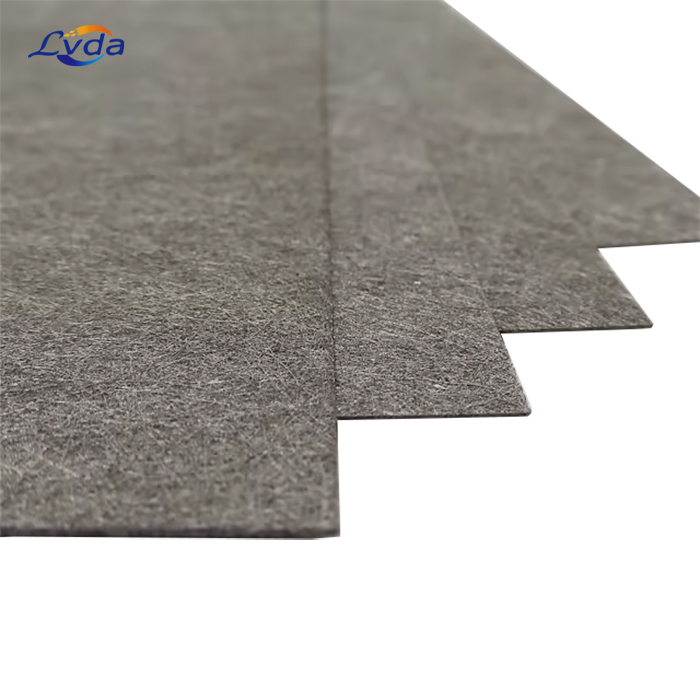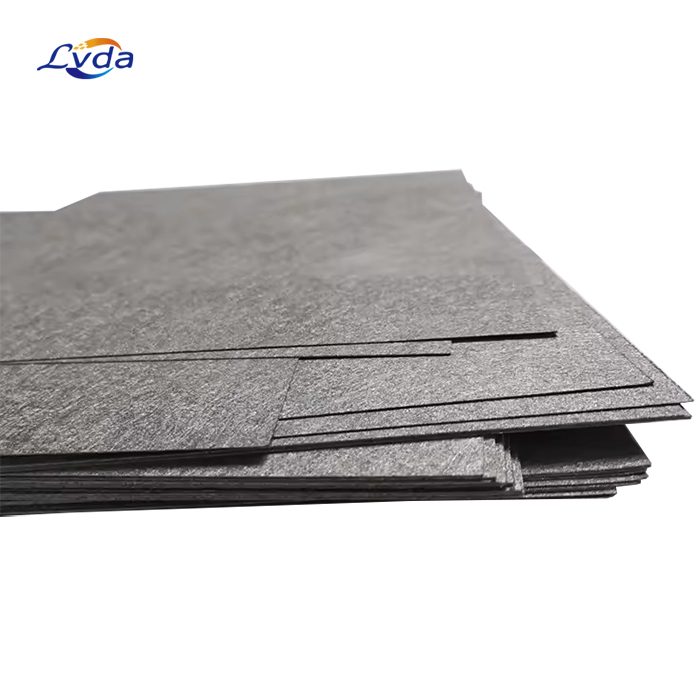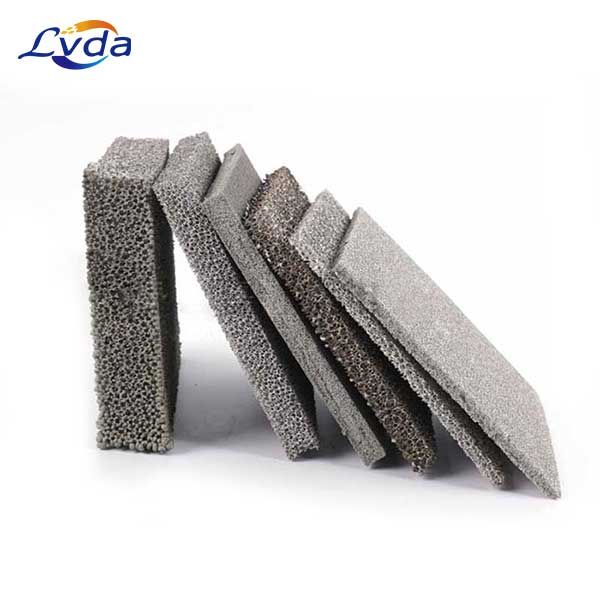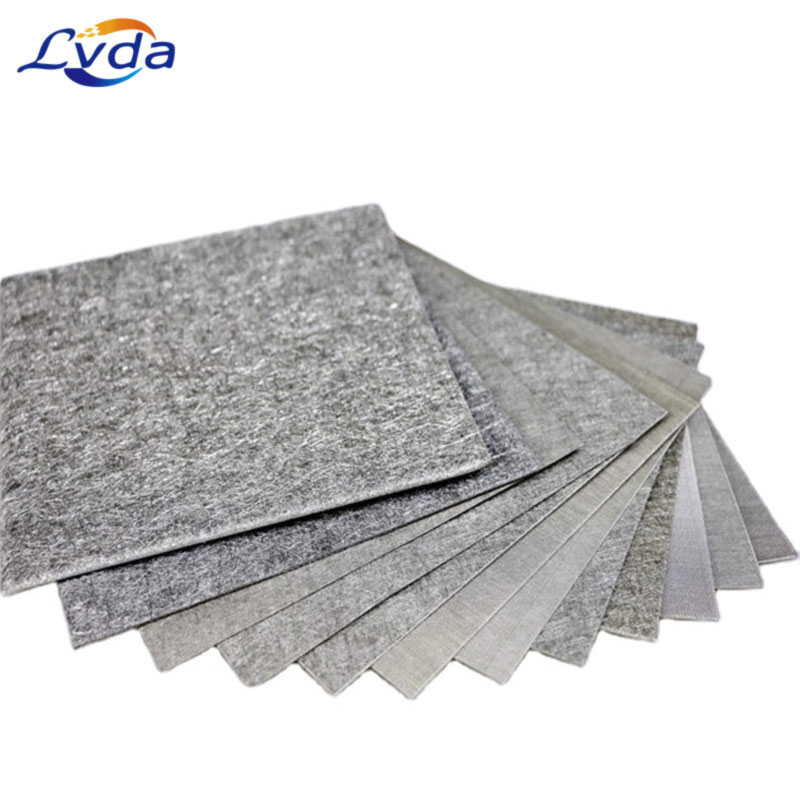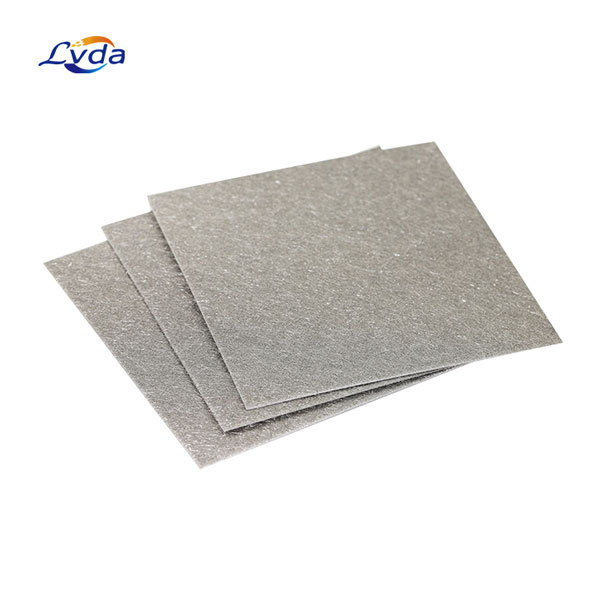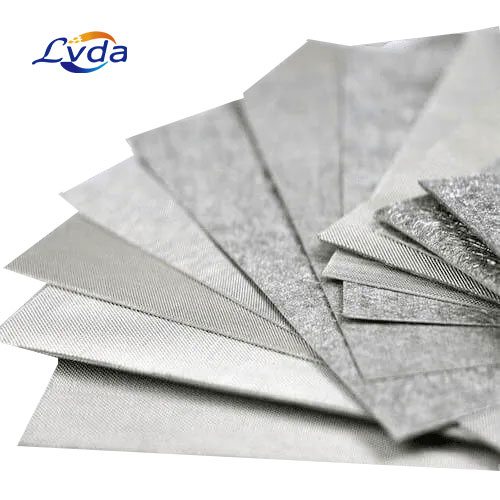Product Details
Platinized titanium felt is a unique material that exhibits excellent high-temperature resistance, electrical conductivity, and catalytic activity. It is widely used in proton exchange membrane (PEM) water electrolysis, where it serves as a critical component in the electrolysis cell.
Parameters
Thickness : 0.2mm - 2mm
Filtration accuracy : 1-200um
Porosity : 60% - 80%
Size : 5×5cm, 10×10cm, 20×20cm
Shape : Square, round, customized
Product shape and size can be customized.
PEM water electrolysis is a process that involves the electrolysis of water using a proton exchange membrane as the electrolyte. The process is typically carried out at elevated temperatures, around 80°C, to improve the efficiency and performance of the electrolysis cell. In this process, hydrogen and oxygen are produced at the cathode and anode, respectively. The efficiency and performance of the electrolysis cell depend on the materials used in its construction, particularly the current collectors that facilitate the transport of protons and electrons.
Platinized titanium felt is a material that is specifically designed to meet the demanding requirements of PEM water electrolysis. It is made by depositing a thin layer of platinum on the surface of titanium fibers, which enhances its electrical conductivity and catalytic activity. The resulting material has several unique properties that make it ideal for use in PEM water electrolysis.
One of the key properties of platinized titanium felt is its high-temperature resistance. The material can withstand temperatures up to 600°C without losing its structural integrity or performance. This property is critical in PEM water electrolysis, where the process is carried out at elevated temperatures to improve efficiency.
Another important property of platinized titanium felt is its excellent electrical conductivity. The deposition of platinum on the surface of titanium fibers significantly improves the electrical conductivity of the felt, which is essential for efficient PEM water electrolysis. The high electrical conductivity of the material ensures that the electrochemical reactions that occur during the electrolysis process are not limited by the transport of electrons.
The catalytic activity of platinized titanium felt is another crucial factor that contributes to its performance in PEM water electrolysis. The platinum layer on the surface of the titanium fibers acts as a catalyst, promoting the electrochemical reactions that occur at the cathode and anode. The high catalytic activity of the material ensures that the hydrogen evolution reaction at the cathode and the oxygen evolution reaction at the anode proceed efficiently.
In addition to its properties, platinized titanium felt also has several applications in PEM water electrolysis. It is commonly used as a current collector in PEM water electrolysis cells, where it is placed in contact with the PEM to facilitate the transport of protons and electrons during the electrolysis process. The material's high-temperature resistance, electrical conductivity, and catalytic activity make it ideal for this application.
Furthermore, platinized titanium felt can also be used as a catalyst support in PEM water electrolysis cells. The material's high surface area and porosity provide an ideal platform for the deposition of catalysts, such as platinum or other noble metals. This allows for the development of more efficient and cost-effective catalysts for PEM water electrolysis.
In conclusion, platinized titanium felt is a unique material that exhibits excellent high-temperature resistance, electrical conductivity, and catalytic activity. It is widely used in PEM water electrolysis, where it serves as a critical component in the electrolysis cell. Its properties and applications make it an essential material in the development of efficient and cost-effective PEM water electrolysis systems.


